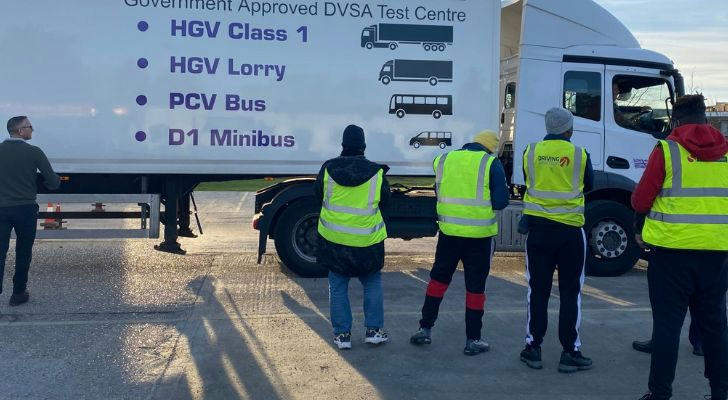How to join the UK's growing HGV workforce
With the UK logistics sector facing a significant driver shortage, more people are turning to HGV (Heavy Goods Vehicle) driving as a stable and rewarding career path. The surge in e-commerce, post-Brexit labor shifts, and increased domestic demand have made HGV drivers more valuable than ever. If you're considering joining this essential workforce, now is the perfect time to start.

Why HGV Drivers Are in Demand
According to the Road Haulage Association, the UK is short of over 60,000 drivers. This shortage affects supply chains across food, retail, healthcare, and construction. As a result, companies are offering better pay, bonuses, and training support to attract new drivers.
The government has also stepped in with support programs, including subsidised training and fast-tracked license processing, to help reduce barriers to entry.
What Is an HGV Licence and Who Needs It?
To drive heavy goods vehicles professionally in the UK, you'll need an HGV licence. The term "HGV" typically applies to:
- Category C1: Vehicles between 3.5 and 7.5 tonnes (e.g., delivery vans)
- Category C: Rigid vehicles over 7.5 tonnes
- Category C+E: Articulated lorries with trailers (usually higher pay)
If you're driving a van or lorry over 3.5 tonnes for work purposes, you’ll likely need one of these categories. The most in-demand are Category C and C+E.
Steps to Join the HGV Workforce
1. Meet Basic Eligibility
To become an HGV driver in the UK, you must:
- Be at least 18 years old
- Hold a full UK car driving licence
- Be medically fit (based on DVLA Group 2 medical standards)
2. Apply for a Provisional HGV Licence
You'll need to:
- Complete the D2 application form
- Undergo a medical exam and submit form D4
- Apply through the DVLA
3. Pass HGV Theory and Practical Tests
This includes:
- Multiple-choice and hazard perception tests
- Case studies for the CPC (Certificate of Professional Competence)
- Vehicle walkaround and practical driving test
You can choose to do this through a private training provider or through a government-funded course (if eligible).
4. Get Your Driver CPC
A Driver Certificate of Professional Competence (CPC) is required for commercial driving. It involves 35 hours of periodic training every 5 years after your initial qualification.
How Long Does It Take to Get Qualified?
On average, it takes 6 to 12 weeks to complete the training and testing required to become an HGV driver, depending on your availability, funding, and the training program you select.
Some fast-track bootcamps supported by government funding can be completed in under 8 weeks.
How Much Do HGV Drivers Earn?
HGV drivers in the UK can earn a competitive wage, especially with the current labour shortages. Here's a rough guide:
- Category C1: £22,000–£28,000/year
- Category C: £28,000–£35,000/year
- Category C+E: £35,000–£45,000/year (can go higher with experience or night shifts)
Bonuses, overtime, and night/weekend work often push real earnings even higher.
Training Providers and Funding Options
You can train for an HGV licence through:
- Private training centres (costs vary from £1,500–£3,000)
- Government-funded Skills Bootcamps
- Employer-sponsored training (common in logistics companies)
Make sure the provider offers DVSA-approved training and a clear breakdown of all required steps.
Benefits of a Career in HGV Driving
- Job security in a high-demand sector
- Good income potential and steady pay increases
- Opportunities to travel across the UK and Europe
- Clear career progression, including fleet management and training roles
Many drivers also enjoy the independence of life on the road and flexible shift options.

Common Challenges to Be Aware Of
While rewarding, the HGV career path can be demanding:
- Long hours and time away from home
- Responsibility for vehicle safety and delivery timeliness
- Must maintain a valid CPC and undergo periodic training
That said, most challenges can be managed with good planning and communication with employers.
Final Tips for New Starters
- Research training providers and compare costs
- Apply early for funding or government support
- Practice regularly for both theory and driving exams
- Choose a license category based on your long-term goals
Many successful drivers begin with Category C and upgrade to C+E after gaining experience.
Joining the HGV workforce in the UK is not only accessible—it’s one of the most stable and future-proof trades available today. With proper training and a professional approach, you can build a solid, long-term career in logistics.
